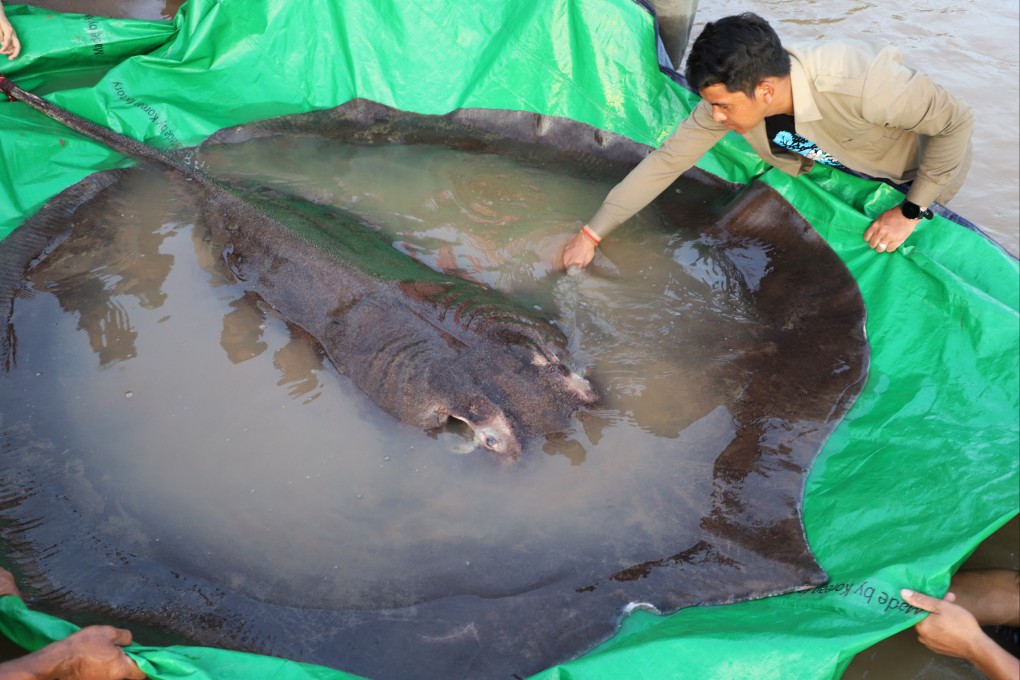Asian Angle | Can Mekong river stingrays tell China’s dam narrative well?
- A fabricated article was used to refute allegations about the negative environmental impact of Chinese dam building
- Overall, view China is benevolent towards downstream states in its dam operations emphasised by its leaders, hydropower companies

Can a giant stingray in the Lower Mekong be used to craft a good narrative about Chinese upstream dams? It can, according to a Khmer Times article about a 300kg stingray found in Cambodia’s Stung Treng province.
The June 27 article quoted Zeb Hogan, an American biologist, as saying that “stingrays do not like to live in polluted waters”, and this “shows that China’s dam construction doesn’t affect the Lower Mekong’s ecosystem”. Hogan is also director of the Wonders of the Mekong project funded by the US Agency for International Development.
Republished on the website of the China-administered Lancang-Mekong Water Resources Cooperation Information Sharing Platform (LMC-ISP), this could have been an example of the “wonderful stories” the Chinese hope to tell to refute what they see as unfounded and US-instigated allegations about the negative environmental impact of dam building in the upstream Lancang (the Chinese name for the Mekong).
“Wonderful stories” was a phrase used by China in a post about a media campaign it organised to promote good narratives about the river.
The stingray story, however, appears to have a sting in its tail. In reality, it is pure fabrication. Hogan confirmed via email with this author that he never spoke to the Khmer Times and he “did not say anything that was reported in the article”, adding that “it is clear that upstream dams do impact the lower Mekong River”.
The article is a cautionary tale about China’s audacity in pushing dubious narratives about the Mekong water development.
